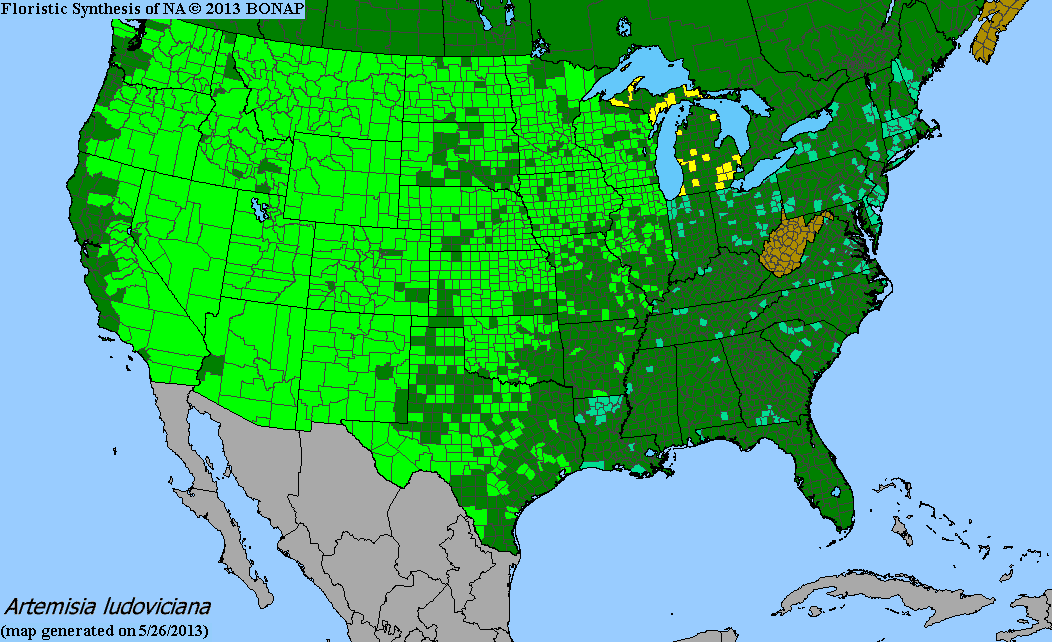Artemisia ludoviciana
Prairie sage Description:
Artemisia ludoviciana, commonly known as white sagebrush or silver wormwood, is a perennial herbaceous plant native to North America. It belongs to the Asteraceae family and can grow up to 1-3 feet in height with a similar spread.
The leaves of Artemisia ludoviciana are silvery-gray in color and are finely divided into linear segments, giving the plant a delicate, lacy appearance. The leaves and stems have a strong, pleasant fragrance, similar to that of sage, and are commonly used in traditional medicine and herbal remedies.
The plant produces small, yellow flowers in the summer, but they are not particularly showy. Instead, the plant is prized for its ornamental value, with its silvery foliage adding a soft, textural element to garden borders, rock gardens, and xeriscape plantings.
Artemisia ludoviciana is drought-tolerant and thrives in dry, well-drained soils, making it an excellent choice for water-wise landscaping. It's found throughout much of North America, growing in a variety of habitats, including grasslands, prairies, and open woodlands. In addition to its ornamental and medicinal uses, Artemisia ludoviciana also provides important habitat and food for a variety of insects and other wildlife.
Native Range:
Prairie sage is a widespread native plant with a range that covers nearly the entire continental United States.
Standard Plant Information:
Plant Height: 1' - 3'
Bloom Time: July - October
Preferred Habitat: Does well in full sun, in dry, open prairies and along roadsides.
Sowing:
For most homeowners, the best option is to scatter seed on the ground by hand broadcasting at a minimum of 16-64 pls ounces per acre. For even coverage, we recommend that you broadcast seed in perpendicular rows across the site to ensure even coverage.
You’ll want to broadcast any grass seed first, which will get raked into the soil lightly. Next, it is ideal to mulch the area lightly with either a clean (no seed) straw or preferably with our native Little Bluestem straw, sold at our retail garden centers. After a light mulching is complete, now it’s time to broadcast your native wildflower seeds, which should not be raked into the soil. A good rain or watering is sufficient to cover the seed.
Planting:
Simply dig a hole in the soil slightly larger than the plant’s roots. Ensure that the soil line of the plant is maintained during the transfer (i.e. the plant should be at the same level with the ground as it was in the pot). Pack any loose dirt back around the plant and make sure you water it well the same day to ensure it has the best chance of survival.








